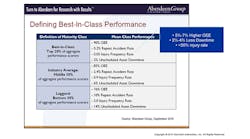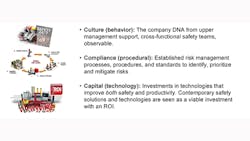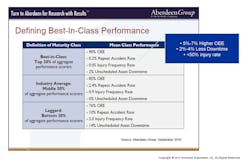No matter how many times we argue the point, the relationship between safety and productivity remains contentious.
There are still too many companies and too many working cultures that view safety training, lock-out practices, and the careful plans EHS professionals have designed to keep workers healthy and safe as productivity bottlenecks.
As Steve Ludwig —Programs Manager, Safety, at Rockwell Automation— put it in his opening talk at October's Safety Leadership Conference, the prevailing thought in the plants is, "no one gets paid for not having accidents; they get paid for producing goods."
Of course, everyone on the safety side of the divide sees the error in this thinking. Injured workers don't produce anything. Even more to the point, workers afraid of getting hurt produce less.
Hence the motto we hear at every safety gathering: Safety doesn't stand in the way of productivity; safety IS productivity.
Yet the arguments and the resentments continue.
At SLC, Ludwig came armed with some definitive objective data designed to put this issue to rest once and for all.
The data came in form of Rockwell Automation's Safety Maturity Index.
Drawing from data pulled from extensive studies, research, and cultural development experts, Rockwell Automation's Safety Maturity Index measures manufacturers’ performance in three critical fields.
The data for this tool provides a definitive relationship between safety and productivity.
Best-in-class companies—those ranking in the top 20 percent of aggregate performance scores on the index — of course recorded impressive efficiency rates – 90 percent OEE and just 2 percent unscheduled downtime. With top companies, that's not much of a surprise.
The surprise comes in the injury rate.
While achieving best-in-class efficiency, these top companies also achieved an injury frequency rate of just 0.05 percent – about 18 times lower than the average companies and 60 times lower than laggards.
This relationship continues down the line: Better productivity, better safety; better safety, better productivity.
"It's true that no one gets paid for not having accidents," Ludwig said. "But if we can reduce injury rate by half, then we can also increase both overall equipment effectiveness and unscheduled downtime."
In other words, "manufacturers can use safety as a productivity driver," he said. "They can drive profitability just by investing in keeping their workers safe."


